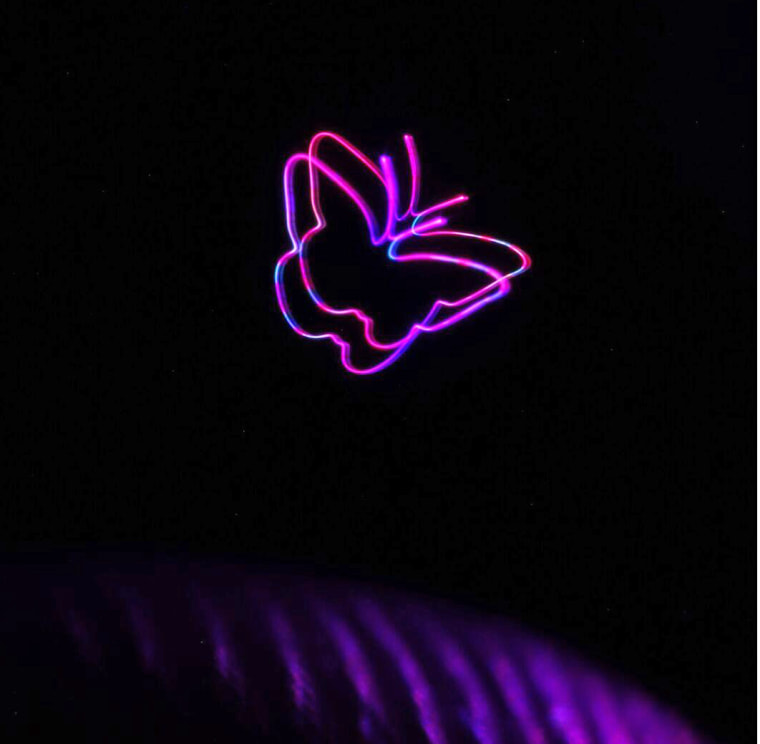Holograms have been a staple of science fiction ever since 1977, when a holographic princess made an impassioned plea to Obi-Wan Kenobi in the original “Star Wars” movie.
Now researchers at Brigham Young University (BYU), in Provo, Utah, are turning make-believe into reality. As part of an initiative they’ve nicknamed the “Princess Leia Project,” they’ve developed a way to project 3D images that appear to float in thin air.
Using lasers to trap and manipulate tiny particles in free space, the engineers created so-called volumetric displays of a butterfly, a prism, and the BYU logo. The projections right now are tiny, but study leader Daniel Smalley, an assistant professor of electrical and computer engineering, said this technology could one day be useful for medical imaging — for instance, to generate 3D images that serve as roadmaps that guide surgeons through challenging procedures.
Holograms are 3D images created by scattering light onto a 2D surface, but a person typically has to look directly at that surface in order to see the futuristic projections. Producing 3D images that people can see from any angle, even when someone walks all the way around the projection, is much trickier.
“To see the light, it needs to scatter off of something and enter your eye,” Smalley told NBC News MACH in an email. “Getting that scattering to happen in thin air is difficult.”

The researchers overcame these difficulties by using an intense laser beam to trap a particle and move it rapidly along a path in free space. Another set of lasers projects visible light onto the particle, illuminating it in different colors.
To create the floating image, the researchers need to move the trapped particle fast enough so that it appears as a solid image — “like a sparkler in the dark,” Smalley said in a written statement.
Min Gu, an optics expert who was not involved with the Princess Leia Project but has done extensive research on holography, called the results impressive and “very exciting.”
But Gu, the Associate Deputy Vice-Chancellor for Research Innovation and Entrepreneurship at Royal Melbourne Institute of Technology University in Australia, said he thinks it will be challenging to create larger images with this technology. Controlling one particle in this way is tricky enough, Gu said, without having to control multiple particles simultaneously over a bigger space. And in order to create a well-defined image, “speed becomes a very important issue,” he added, meaning all of the particles will have to move rapidly to create the appearance of solid outlines.
“I’m not saying it’s impossible, but if you talk about the detail, the level of the imaging and the quality, I think there’s a long way to go,” Gu said.
Smalley said he and his colleagues are already experimenting with simultaneously manipulating and illuminating multiple particles to make bigger images, which if successful, could open up new ways for these projections to be used in the future.
“When we make it bigger,” Smalley said, “I think telepresence would be a compelling application.”

